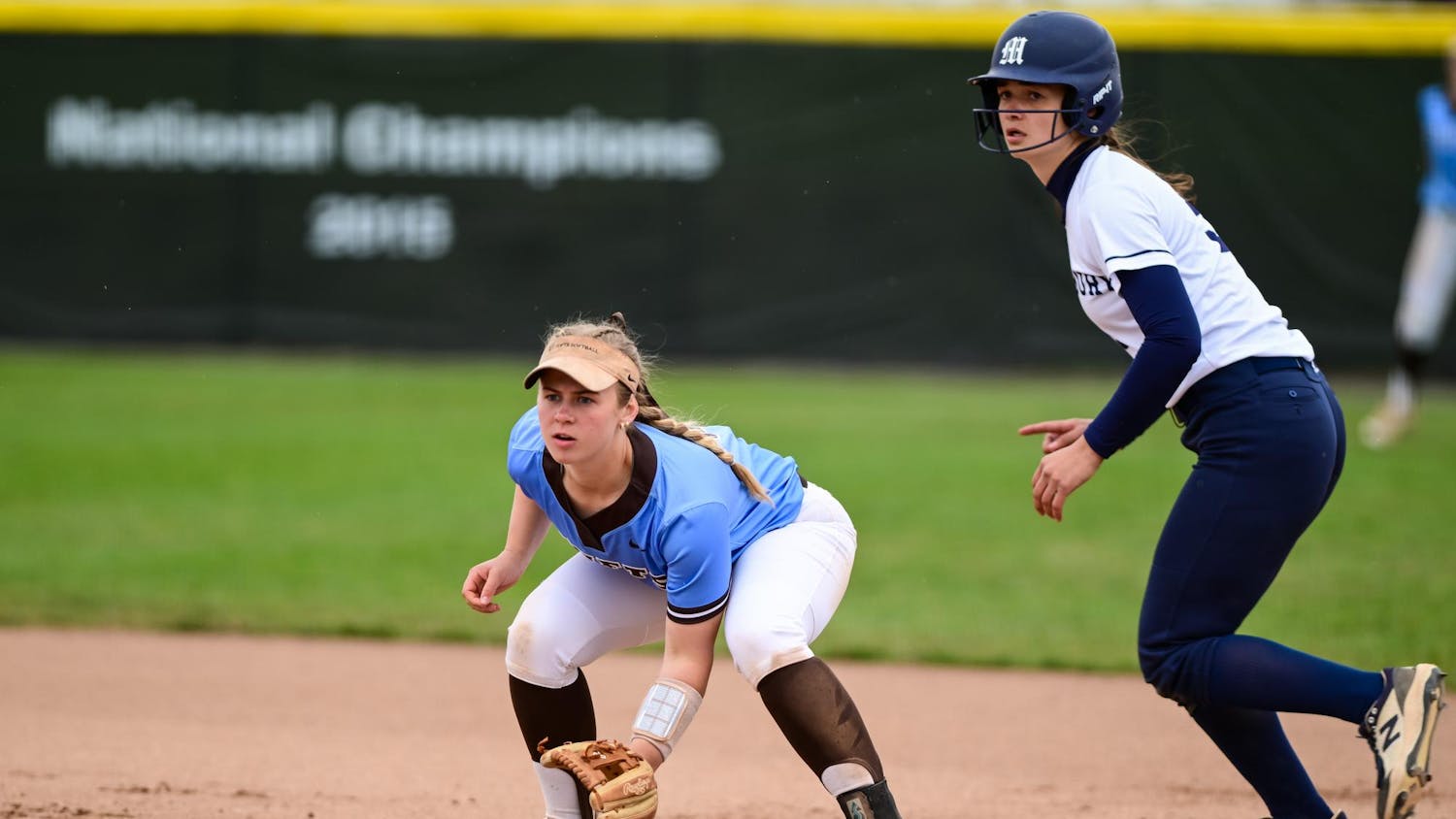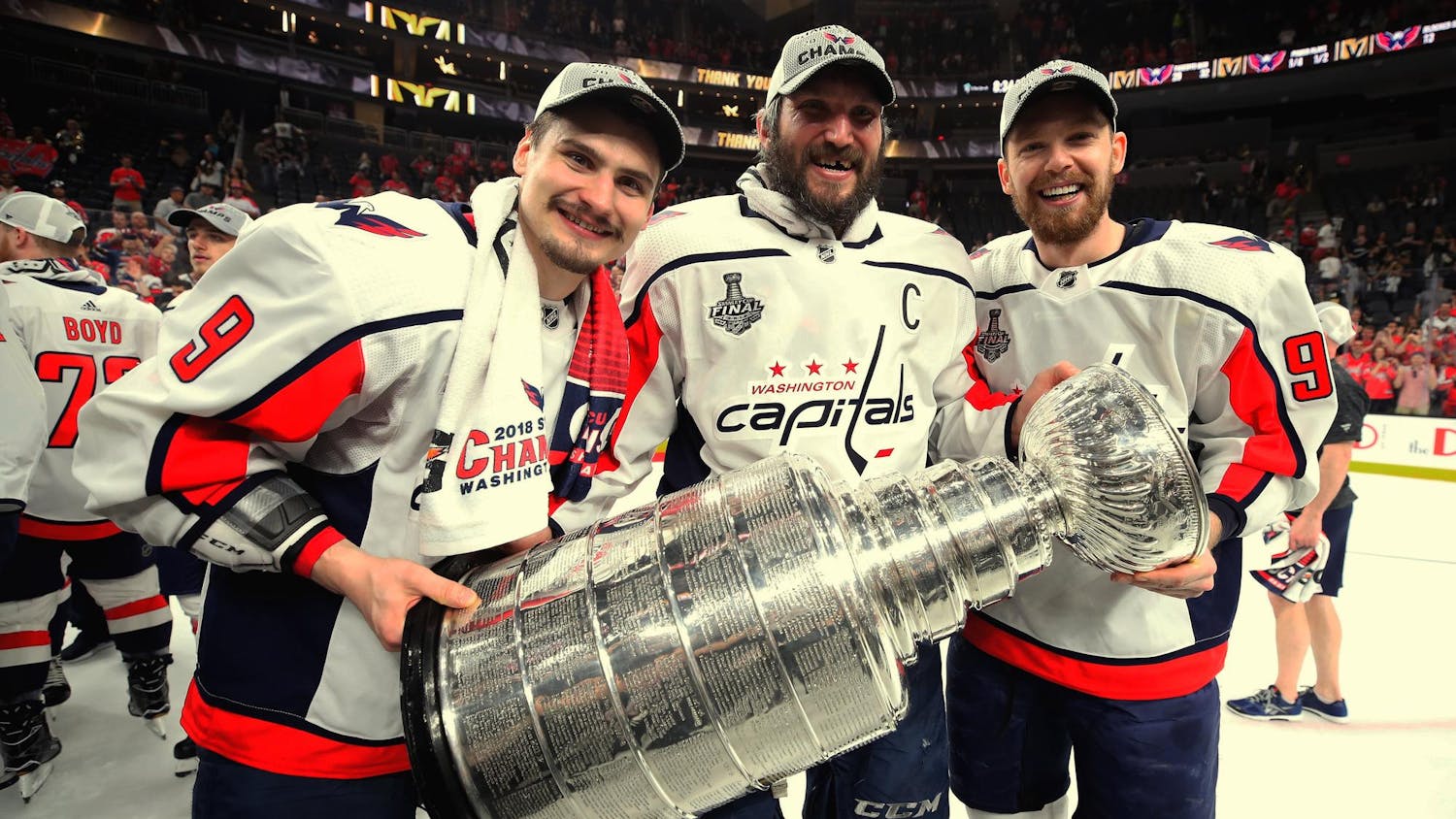With its dominant performance at the Head of the Fish Regatta on Saturday, Oct. 29, men’s crew came home with some new decorations for the Shoemaker boathouse in hand: lacquered fish heads. The Jumbos, in their last varsity event of the fall season, claimed victory in four different races, building momentum that will surely carry them through to the spring season.
Why the fish heads? Beyond a simple play on the name of the regatta, the Head of the Fish in Saratoga Springs, N.Y. was initially founded as a counter to other regattas, a race whose stated goal was to be “one that wouldn’t take itself too seriously,” according to a Nov. 2002 article in Rowing News. Since 1986, however, much has changed. Playing host to New England and New York teams alike, the Head of the Fish has increasingly found itself at the geographical core of the nation’s top crews, whose intense programs have encouraged the regatta to take on unprecedented levels of significance for all involved.
For Tufts, the race marked an opportunity to compete against NESCAC and other regional rivals. In the fall season, there is no set of concrete rankings due to the season's short duration (only through the month of October) and small number of races. However, it is a critical checkpoint from which teams can guide training. This year's Head of the Fish results encouraged the team to aspire to even more ambitious goals for the longer and more important spring season. While there always remains room for improvement, the Jumbos definitively revealed their ability to compete — and win — at a high level this weekend.
“During the fall season, our focus is almost entirely on developing technique and base fitness, with the aim of putting the pieces in place for a successful spring racing season," coach Noel Wanner told the Daily in an email. "However, our recent results at the Head of the Fish show that we have some speed, and are right where we need to be -- competitive with all of our major NESCAC rivals.”
Junior tri-captain Andrew MacMillen defended his first-place title in collegiate men’s singles with a time of 14:51.6, fighting through the chilly, choppy water and windy conditions. The Jumbos also took home fish heads in the collegiate lightweight fours, the collegiate quad and the novice eights,with the men’s first and second varsity eights placing fourth and third in their respective races.
The lightweight four, crewed by sophomore coxswain James Grant, sophomore Ryan Bell, senior Tyler McCullough and juniors Thomas Hendrickson and Andrew Takasugi, outdid Tufts' second-place performance last year and defeated runner-up Middlebury by eight seconds.
The team’s journey to Saratoga on Saturday followed the Head of the Charles, considered one of the most prestigious regattas in the world, on Oct. 23. There, a group of Tufts upperclassmen, including MacMillen, junior Ashton Knight and senior tri-captains Doug Burt and Zach Merchant, battled their way to an 11th place finish in the collegiate fours division, securing a bid in next year’s race. On Oct. 2, the team posted a strong performance at Green Mountain Head in Putney, Vt., where it took five out of the top 22 spots overall.
“Our fall was very successful, though that success is measured more internally than externally," Wanner said. "The team has done a good job, learning how to move the boat effectively through steady miles in the single scull and building fitness. The team is deep, young and very motivated, so we have reason to aim high this coming spring. We are generally ahead of last year's pace -- our fall speed is better, despite not focusing as much on racing.”
Soon enough, however, winter will arrive and the Mystic River will freeze over. For men’s crew, that means switching oars for ergs (rowing machines) and plenty of unofficial, though critical, off-season training.
Sophomore James Miller, who rowed for the men’s second varsity eights this weekend, is prepared to embrace the challenge.
“Over the winter, we are looking to put in lots and lots of time doing aerobic fitness work on erg," Miller said. "There's lots of work for us to do in the coming months so that we'll be ready to get back on the water and go fast as soon as the spring season rolls around.”
While the New England Rowing Championships (NERCs) aren't until May, men’s crew is wasting no time in shifting its focus towards the race that will play the largest role in defining how it views its success this school year.
“Everyone on the team, from new recruits to graduating seniors, is committed to working towards the goal of putting out the fastest lineups we can next May," Miller said. "That's going to take massive individual effort and unwavering commitment to a rigid training program beginning with the first day off-season.”
It is clear that men’s crew is projecting a new confidence, a new optimism — but every rower knows that to live up to the potential that they have displayed thus far is going to take continued work. Without Wanner to push the team through the winter, it is up to each rower as an individual to put in the hours and the captains to be a voice of leadership.
“Our goal remains the same: prepare to be the fastest boats on the water in the grand final of the last race of the year," Wanner said. "Everything we have done this fall has been aimed towards that goal. Much of that work is unglamorous. To learn to row fast, you sometimes have to row slowly. But the Head of the Fish was encouraging: with thrown-together lineups and little race preparation, we were more than competitive.”





